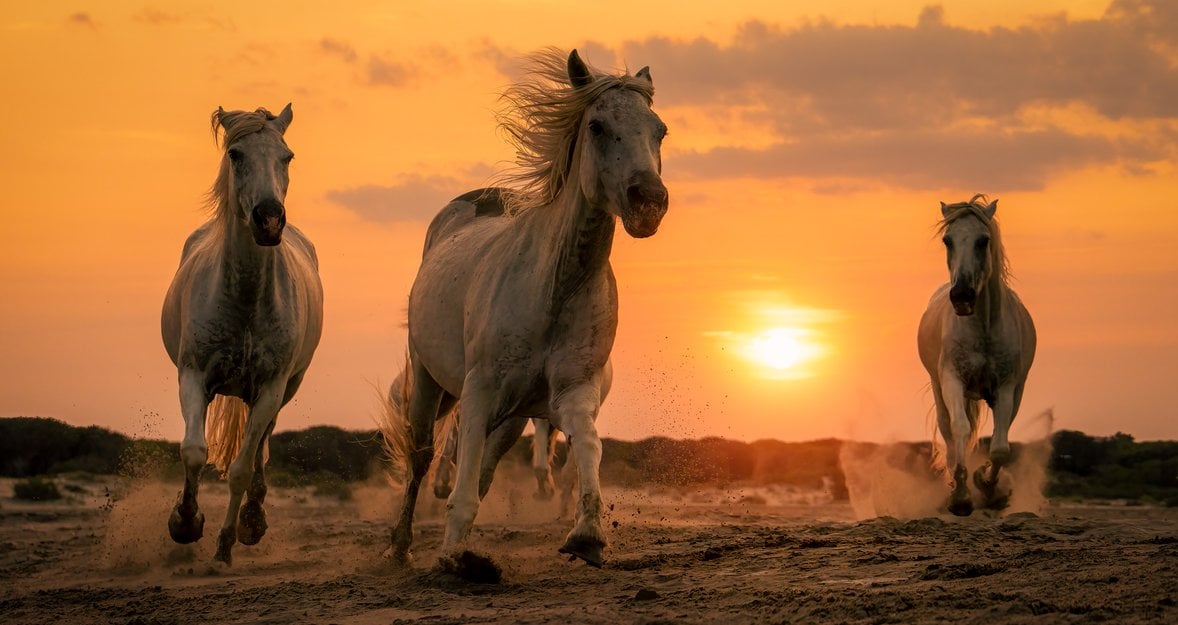The Rule of Odds in Photography: How to Create Balanced Compositions
May 05, 2025

Discover how the Rule of Odds can improve your photo composition. Learn why odd-numbered subjects create visual balance and how to apply this simple trick.
Have you ever looked at a photo and thought, “That just feels right”? Often, this happens because of good composition, and one simple trick that makes a big difference is the Rule of Odds.
In this guide, you'll learn what the Rule of Odds is, why it works, and how you can use it in different types of photography. You'll also discover when breaking the rule might actually improve your photos. So, without further ado, let’s get started!
What Is The Rule Of Odds?
 ➡️The Rule of Odds is a simple photography technique that suggests having an odd number of subjects in your frame (usually three, five, or seven) creates a more interesting and balanced image.
➡️The Rule of Odds is a simple photography technique that suggests having an odd number of subjects in your frame (usually three, five, or seven) creates a more interesting and balanced image.
When you place an odd number of objects in a photo, it's easier for the viewer's eye to move naturally around the scene. This helps create a sense of harmony without feeling too organized or forced.
You've likely seen the Rule of Odds used without even realizing it. For example:
In flower arrangements, florists often use three or five flowers to create a more pleasing display;
In interior design, decorators often group candles, vases, or picture frames in sets of three to make shelves and tables feel balanced;
Or in food presentation, chefs frequently plate dishes with three main elements to make the meal look more appealing.
By using an odd number of subjects, these designs feel intentional yet still relaxed, which creates a perfect balance between order and creativity.
Why Does The Rule Of Odds Work?
 The reason this works comes down to how our brains process visual information. When we see an even number of subjects (like two or four), our brain tends to split them into pairs or groups, which can make the image feel too structured or predictable. With an odd number of subjects, there's no obvious way to divide them equally, so it creates a sense of movement and flow. This slight imbalance grabs our attention and keeps us looking at the image longer.
The reason this works comes down to how our brains process visual information. When we see an even number of subjects (like two or four), our brain tends to split them into pairs or groups, which can make the image feel too structured or predictable. With an odd number of subjects, there's no obvious way to divide them equally, so it creates a sense of movement and flow. This slight imbalance grabs our attention and keeps us looking at the image longer.
When there's an odd number of subjects, our eyes are naturally drawn to the center first, then move outward to explore the other elements. This creates a smooth and comfortable way for us to take in the whole image.
For example, if you photograph three trees, the middle tree becomes the anchor point, while the other two guide our eyes through the scene.
Odd numbers often feel more relaxed and natural because they appear less staged. Nature rarely follows perfect symmetry: think of rocks on a beach, birds in the sky, or flowers in a field. An odd number mimics this natural randomness, making the photo feel more realistic.
Your AI-Powered Photo Editor for MacOS and Windows
Discover Now!Composition Techniques With The Rule Of Odds
 Once you understand the Rule of Odds, you can use different techniques to make your photos even more eye-catching. Here are some simple ways to improve your compositions:
Once you understand the Rule of Odds, you can use different techniques to make your photos even more eye-catching. Here are some simple ways to improve your compositions:
Use Leading Lines
Leading lines are natural lines in a scene that guide the viewer's eye toward your main subject.
When you have three subjects, you can position them along a path, fence, or road to create a clear visual flow.
The lines will lead the viewer's eye from one subject to the next, helping them explore the whole image.
Example: A photo of a single tree framed by lavender rows that stretch into the distance. These natural leading lines draw the eye straight to the tree, creating depth and focus in the composition.
Create a Triangle Shape
 Arranging three subjects in a triangle shape can make your photo feel balanced and stable.
Arranging three subjects in a triangle shape can make your photo feel balanced and stable.
Triangles give your composition structure without feeling too rigid.
The points of the triangle encourage the viewer to move their eyes around the image.
Example: Three people sitting at different heights (one standing, one sitting on a bench, and one kneeling) naturally form a triangle and add depth to the photo.
Balance with Negative Space
 Negative space is the empty area around your subjects.
Negative space is the empty area around your subjects.
When you have an odd number of subjects, leaving some extra space around them can make the photo feel less cluttered.
This technique draws attention to your main subjects while still creating a sense of calm.
Example: A photo of three birds on a wire with plenty of sky around them makes the subjects stand out without feeling crowded.
Frame Your Subjects
 Framing is when you use objects like doorways, windows, or tree branches to surround your main subjects.
Framing is when you use objects like doorways, windows, or tree branches to surround your main subjects.
When photographing three or five subjects, a natural frame helps focus the viewer's attention.
This technique also adds depth to your image.
Example: A photo of three hikers framed by trees creates a strong sense of focus while keeping the background interesting.
Add Depth with Layers
 Placing your subjects at different distances from the camera creates layers in your photo.
Placing your subjects at different distances from the camera creates layers in your photo.
With an odd number of subjects, you can position one in the foreground, one in the middle ground, and one in the background.
This technique adds depth and encourages the viewer to explore the whole scene.
Example: In a forest photo, placing one tree trunk close to the camera, two smaller trees in the middle, and a third tree farther away creates a rich, layered effect.
Exclusive Tools of Endless Possibilities in One AI Editor
Explore Now!Applying The Rule Of Odds In Different Photography Styles
 The Rule of Odds can improve almost any type of photography by helping you create balanced and interesting compositions. Here's how you can use it in different photography styles:
The Rule of Odds can improve almost any type of photography by helping you create balanced and interesting compositions. Here's how you can use it in different photography styles:
1. Portrait Photography
When photographing groups of people, try to pose them in sets of three or five.
For a group of three, position one person in the middle and the other two slightly behind or beside them. This creates a natural triangle shape, which feels balanced and draws attention to the central subject.
For a group of five, stagger their positions so they don't form a straight line. This keeps the image lively and engaging.
Example: In this beach group portrait, five friends lean in with playful, staggered poses that avoid a stiff, straight line. The mix of positions creates a relaxed, dynamic feel—perfectly capturing the energy and joy of the moment.
2. Landscape Photography
In landscapes, the Rule of Odds can guide the viewer's eye through the scene.
Look for three rocks, five trees, or seven flowers that naturally create points of interest.
Position these elements in different parts of the frame to add depth and balance.
Example: In this aerial shot, a winding road lined with clusters of three trees creates natural balance across the frame. Their odd number subtly draws the viewer’s eye from the golden field on the left into the vibrant green on the right, adding rhythm and harmony to the landscape.
3. Street Photography
 Street scenes often feel busy, but using the Rule of Odds can bring structure to the chaos.
Street scenes often feel busy, but using the Rule of Odds can bring structure to the chaos.
Focus on capturing three subjects in motion, like three people walking together or a person framed between two others.
This grouping creates balance while still feeling spontaneous.
Example: Photographing three cyclists riding in different directions can create a dynamic yet organized shot.
4. Still Life and Food Photography
 The Rule of Odds is especially useful when arranging objects in still life or food photography.
The Rule of Odds is especially useful when arranging objects in still life or food photography.
Try placing three items on a plate or grouping five objects on a table.
Avoid lining items up perfectly and stagger their positions to keep things interesting.
Example: A photo of three cupcakes, each slightly different, feels more inviting than two identical ones side by side.
Pro Tip: If you can't find an odd number of subjects naturally, you can often create the effect by adjusting your framing or cropping. For example, focus on three flowers in a larger field or highlight five key objects in a busy market scene.
WHEN TO BREAK THE RULE OF ODDS
 The Rule of Odds is a great tool for creating balanced and interesting photos, but there are times when you can break this rule to improve your composition.
The Rule of Odds is a great tool for creating balanced and interesting photos, but there are times when you can break this rule to improve your composition.
1. Creating Symmetry
 If you want your photo to feel calm, organized, or powerful, symmetry can be a great choice.
If you want your photo to feel calm, organized, or powerful, symmetry can be a great choice.
Even numbers, like two or four subjects, can create a mirror effect that feels strong and balanced.
This technique works well in architecture, reflections, or carefully staged portraits.
Example: A photo of two trees perfectly framing a mountain peak creates a peaceful, balanced look.
2. Highlighting a Strong Subject
 Sometimes, having just one subject is the best way to create impact.
Sometimes, having just one subject is the best way to create impact.
A single person, object, or landmark can grab attention right away.
This technique is especially powerful when combined with negative space.
Example: A lone boat on a calm lake draws the eye directly to the subject, creating a sense of stillness and focus.
3. Showing Connection or Contrast
 Two subjects can create a strong visual relationship, whether they're working together or standing in contrast.
Two subjects can create a strong visual relationship, whether they're working together or standing in contrast.
This pairing can tell a story, create tension, or highlight differences.
It's especially useful in portrait or street photography.
Example: A photo of two dancers holding hands can express connection and emotion in a way that three subjects might not.
4. Emphasizing Patterns or Repetition
 Repeating shapes, objects, or lines often look better with even numbers because they create a stronger pattern.
Repeating shapes, objects, or lines often look better with even numbers because they create a stronger pattern.
Example: A row of four windows or six fence posts can create a satisfying rhythm in your photo.
The Bottom Line
The Rule of Odds is a simple yet powerful way to make your photos more interesting and balanced. By using three, five, or seven subjects, you can create images that feel natural and inviting.
Remember, the Rule of Odds is a guide, not a strict rule. Don't be afraid to experiment, and trust your instincts. Sometimes, breaking the rule can lead to even better results.
The key is to practice. Try adding odd numbers to your compositions and see how it changes the look and feel of your photos. With time, you'll start to notice what works best for your style and subjects.





